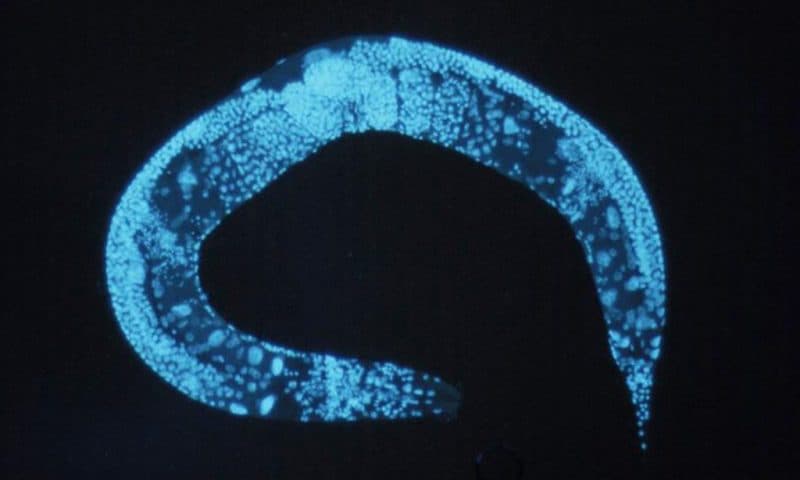By studying the simple nematode worm Caenorhabditis elegans, a team led by scientists at the University of Kent discovered a transcription factor—a protein involved in turning genes on and off—that seems to act as a master controller of the sense of hunger and related eating or resting behaviors in humans.
The researchers found that the transcription factor, SKN-1B, acts as a central regulator for controlling satiety and food-related behaviors in C. elegans. They suggested there may be a similar role for its human equivalent, the NF-E2 related transcription factors (Nrfs), according to results published in the journal PLOS Genetics.
The ability to correctly sense food intake and act accordingly is important for maintaining health and preventing disease. The team suggested that Nrfs might offer a novel target for the development of drugs against obesity and other food-related diseases.
The researchers became interested in SKN-1B’s role in metabolism because they had previously elucidated its role in mediating an increase in nematodes’ life spans by dietary restriction.
To understand the role of SKN-1B in roundworms’ food-related behavior, the team tweaked it in some worms and compared their behavior with that of normal worms. Turns out, worms with normal SKN-1B explored more bacterial food than their mutant counterparts did.
When the worms are fed after a period of fasting, they typically enter into a sleeplike state linked to satiety. The team found that SKN-1B suppressed this state, as SKN-1B mutants spent longer periods in dormancy than did wild-type worms.
Further analysis showed that SKN-1B in neurons exerted its regulatory power through TGF-beta and insulin signaling pathways, acting as a sensory switch that allowed the worms to accurately perceive the environment and behave accordingly.
The team also showed that SKN-1B supports a network of mitochondria, which are the cell’s energy source. SKN-1B mutant worms showed signs of starvation despite being well-fed. These worms’ mitochondrial networks appeared to be disorganized in a way that was similar to worms that have fasted, “implying that SKN-1B mutants are, at least as far as their mitochondria are concerned, starved,” the researchers noted in the study. They suggested that the regulation of mitochondrial networks in the muscle allows SKN-1B to control food-related behavior.
Many scientific teams are searching for regulators of food cravings as potential inspiration for drug development in obesity. Researchers from the National Institutes of Health recently located a gene called Prkar2a. Mice that lacked the gene showed decreased consumption of high-fat foods but increased motivation to exercise.
Researchers at the University of Pennsylvania zeroed in on a subset of neurons in the brain that produce the inhibitory neurotransmitter GABA. They showed that these neurons could be key in the appetite-suppressing ability of Novo Nordisk’s GLP-1 obesity drug Saxenda.
While the University of Kent study examined nematodes, the findings could have implications for humans, the team figured. If future studies can confirm the role of Nrfs in regulating the sense of fullness and subsequent behaviors in humans, these transcription factors could represent a new target for developing drugs to control obesity, overeating and other food-related diseases, the researchers said.

